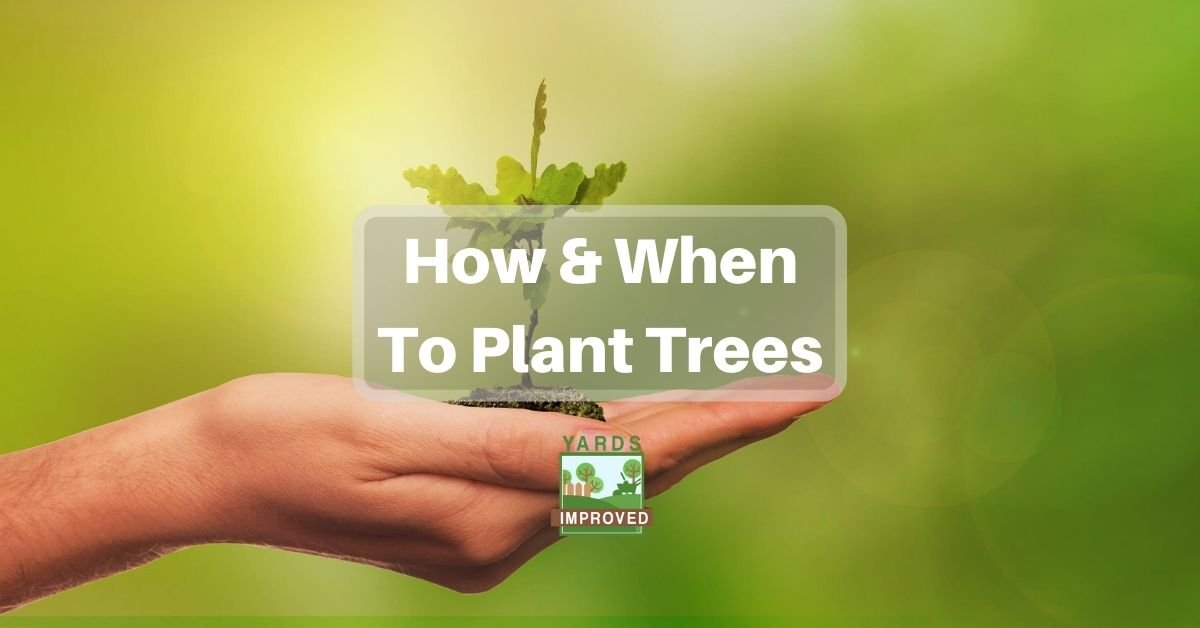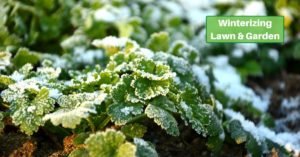Trees present so many wonderful advantages for your yard. They offer shade, attract birds and small animals, and serve as a windbreak. They can even help keep your utility bills lower. Of course, they’re also beautiful!
If you want to add trees to your yard, it’s important to get them started right. That means choosing the right time and the right place to plant them. It also means giving them all they need to flourish, especially during the shock of transplantation.
Wait – let’s back up a bit more. First of all, it means choosing the right type of tree for your climate and the available space. Remember, the sapling you plant isn’t going to stay so small and manageable. You need to be sure that the full-grown version will fit in well!
Is There A Best Time To Plant Trees?
Once you know the type of tree you want to plant, it’s time to figure out when to plant them. As with a lot of planting, you have two choices: spring or fall.
Fall is the best time, but spring isn’t too bad either. The advantage of planting in the fall is that all the tree’s energy will be devoted to establishing its root system. It won’t be trying to sprout leaves or grow taller.
Spring isn’t bad, either. Even though the tree will be expending energy on buds and leaves, the sapling will still be able to start spreading its roots. As long as it has some time to establish itself a bit before the summer’s heat, it will still be able to thrive.
One advantage of spring is that you’ll probably have more of a selection in nurseries. However, in the fall, you may find better discounts since stores want to get rid of what’s left.
Whether you choose fall or spring, try to stay at least a month to six weeks away from when the more severe weather comes in. That generally means sticking to early- to mid-season for planting.
Of course, summer and winter are not ideal for planting because of the extreme temperatures.
Deciding Where To Plant
You’ll also have to decide where to plant your new tree. Again, it’s important to remember that the tree is going to grow. How much growth will depend on the type of tree, of course.
Be sure that you choose a spot that will let the root system spread adequately. That means keeping it far enough from the house, the sidewalk, and the driveway. It also means keeping it separated from other trees so they don’t choke each other.
Check with your local utility company, too, to find out where buried utility lines are. Most areas have a single number to “call before you dig” so that you can check on water, power, cable, and other lines on your property.
You also have to think about how other trees and even the house could interfere with the growth of your new tree. Primarily, this has to do with the amount of sun your new tree needs. This varies from tree to tree – some do better with ample light while others only need a bit. But you’ll need to pay attention to how much sunlight reaches different spots of your yard before finalizing a spot.
Finally, don’t block too much of the view of your house with a tree. Open sight lines from house to street make a home less attractive to thieves.
Gathering Your Tools
Once you have your type of tree and its future home chosen, it’s time to get your tools together. There isn’t much you need, even though it can be tough work at times.
The main tool you’ll need is a quality garden spade. You might also want a pickaxe to help break up any roots that you find as you start digging.
Besides this, we recommend either a wheelbarrow to put the dirt into or a tarpaulin to toss it onto. Either of these will make it easier to gather up the dirt you excavate when it’s time to return it to the hole.
You’ll also need your garden hose hooked up so you can start watering your sapling right away. If you don’t have a hose or it doesn’t reach, you’ll need several large buckets of water, or be prepared to refill a bucket repeatedly.
As far as other materials, mulch is important to help protect your new tree.
Doing The Job
Once everything’s ready, it’s time to start the hard part: digging the hole.
Your hole doesn’t have to be deep. It should only be the same depth as the root ball of your sapling. This will help protect the roots and the trunk of the tree by keeping the crown at the right level.
However, you should dig substantially wider than the root ball. Dig out the hole 3-5 times as wide as the root ball. That is, if the root ball measures 10 inches across, you’ll want the hole to be at least 30 inches (2.5 feet) across and up to 50 inches (4 feet 2 inches) across. This width will loosen the soil in the area and make it easier for the roots to spread out.
Once the hole is dug, you can place your tree in it. Remove whatever covering the root ball has. If it’s burlaps, you can leave it there in the hole, under the tree; otherwise, remove it.
If necessary, you can stake up your tree so that it remains upright. It’s best to use posts on either side with ties to the tree.
You can now start to refill the hole with the dirt you dug out. Make sure to keep the tree straight as you do so.
Add about two inches of mulch all around the tree. This helps hold in moisture, keep the roots at a more constant temperature, and keep weeds away.
Be sure to water your new tree right away. Keep the soil damp – neither dry nor too wet. The frequency of watering will vary depending on the type of soil you have and the weather conditions, but it could be from every day to every few days.
Saplings also benefit from being wrapped in burlap or other protective materials. This provides a cushion against physical damage, helps keep pests away, and encourages optimal growth.
Conclusion
Planting a new tree can lead to great benefits for your yard. It will take time to grow but it’s a rewarding project that can be enjoyed for years and even for generations. Be careful to choose the type of tree and the location carefully. Take good care of it, and it will provide you with shade and beauty!









